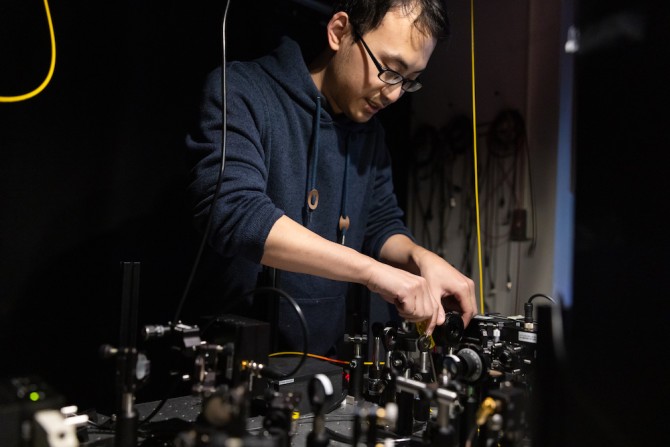News directly from Cornell's colleges and centers
Klarman Fellow: Studying electron interactions with ultrafast lasers
By Kate Blackwood
Electron interactions are mysterious, delicate, basic to our understanding of matter – and exponentially complex, says physicist Hongyuan Li.
“Each electron has a charge. They also carry a quantum property called ‘spin.’ These charges and spins can interact with each other, making electron behavior very complicated,” said Li, a Klarman Postdoctoral Fellow in physics in the College of Arts and Sciences (A&S) and an experimental fellow at the Kavli Institute at Cornell (KIC) for Nanoscale Science.
One cubic centimeter of steel can contain as many as 10^23 electrons, each interacting with others, Li said; one cup of water contains even more. The electrons’ collective behavior, although very challenging to predict due to these various interactions, are nonetheless important to emergent phenomena, such as high-temperature superconducting, making the study of “corelated electrons,” as the field is known, a central focus of modern condensed matter physics.
At Cornell, Li is developing experimental tools to explore the nature of electron interactions in collaboration with the lab of his faculty co-hosts Kin Fai Mak, professor of physics (A&S) and Jie Shan, professor of physics (A&S) and Walter S. Carpenter Jr. Professor of Engineering in Cornell Engineering. With the tools, Li detects interacting electrons in specialized two-dimensional (2D) materials made of a few – or only a single – layer of atoms.
Read the full story on the College of Arts and Sciences website.
Media Contact
Get Cornell news delivered right to your inbox.
Subscribe

